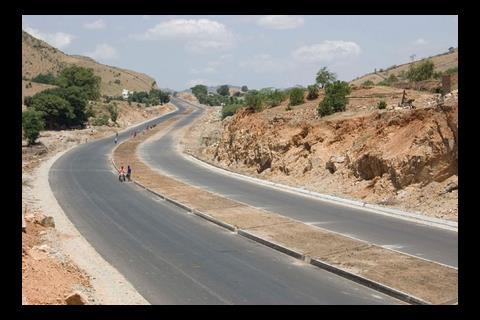And the good news is that UK companies are uniquely placed to capitalise on the South Asian powerhouse’s £344bn infrastructure boom – as an increasing number of firms are discovering
Business minister Lord Davies of Abersoch does not mince his words when it comes to India. On a trade mission to promote UK involvement in the subcontinent’s infrastructure development last week, the politician sent out a clear message to British firms: “India is on the move and we must move with it.”
Renewed efforts from the government to inspire interest in the Indian market come as Building gears up for its inaugural Global Infrastructure Forum in November, which will bring together senior industry figures to discuss the challenges of delivering key projects around the world.
India plans to spend £344bn on infrastructure by 2012 and is actively seeking the skills and knowledge of foreign firms to help it in its expansion. The country’s burgeoning transport, power and water markets will form the focus of one of the sessions at Building’s conference.
International firms already taking advantage of infrastructure opportunities in India include Scott Wilson, Arup and Mott MacDonald. Last week, consultant Gleeds announced that it was opening an office in Mumbai.
British companies are in a particularly strong position. Gary Neville works at Bloomsbury Asset Management, exclusive adviser to investment company Infrastructure India. He says: “Where the British have a particular advantage is that English is widely spoken and a lot of the infrastructure investment is of a PFI, PPP type, which the UK pioneered.”
A lot of the infrastructure investment is of a PFI, PPP type, which the UK pioneered
Gary Neville, Bloomsbury Asset Management
He adds that the recent elections in India have brought in a fresh – and more favourable – perspective on spending plans: “There is a particular recognition that it was the relative lack of infrastructure investment that was the biggest handicap in developing GDP growth.”
Not that GDP isn’t impressive, at least by European standards. The economy grew by 6.7% in the last financial year, which was down on the startling 9% growth the previous year but not to be sniffed at. India has 35 cities with a population of over 1 million and is forecast to become the fifth largest consumer market in the world by 2025, according to the McKinsey Global Institute.
The UK India Business Council has identified nine tier-two cities it believes offer huge opportunities for British businesses, including Ahmedabad, Jaipur and Chandigarh, where it is planning to take trade delegations over the next six months. Earlier this month, it visited the central city of Nagpur, where Scott Wilson is working on MIHAN, a logistics hub that aims to create some 400,000 jobs.
Eric Mall, Scott Wilson’s head of airports in the region, is managing the airport side of the project. He says: “Clearly this is a very exciting place to be. And it’s not just Nagpur. There are terminals coming up at Chennai, Mumbai and Kolkata and a new terminal at Delhi that will be one of the largest in the world.”
Other projects include the 2010 Commonwealth Games in New Delhi and a scheme to build 217 new towns, being project managed by Gleeds for client Sahara Infrastructure and Housing.
Postscript
To learn more about the Indian market, as well as opportunities in North Africa, Abu Dhabi and the UK, join Building at the Global Infrastructure Forum on 5 and 6 November. For details and to register, visit globalinfrastructureforum.building.co.uk.





























No comments yet